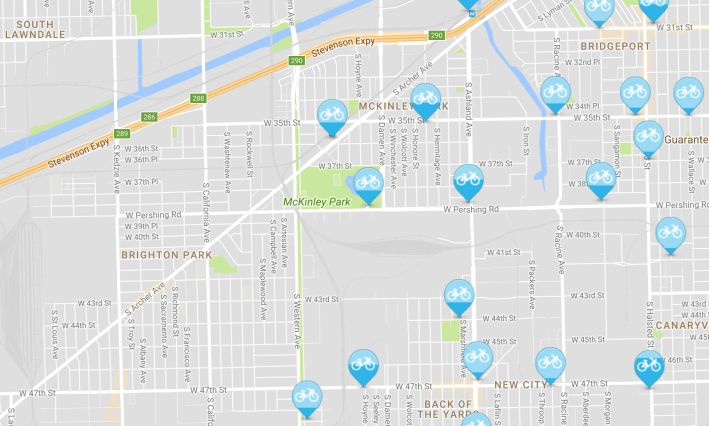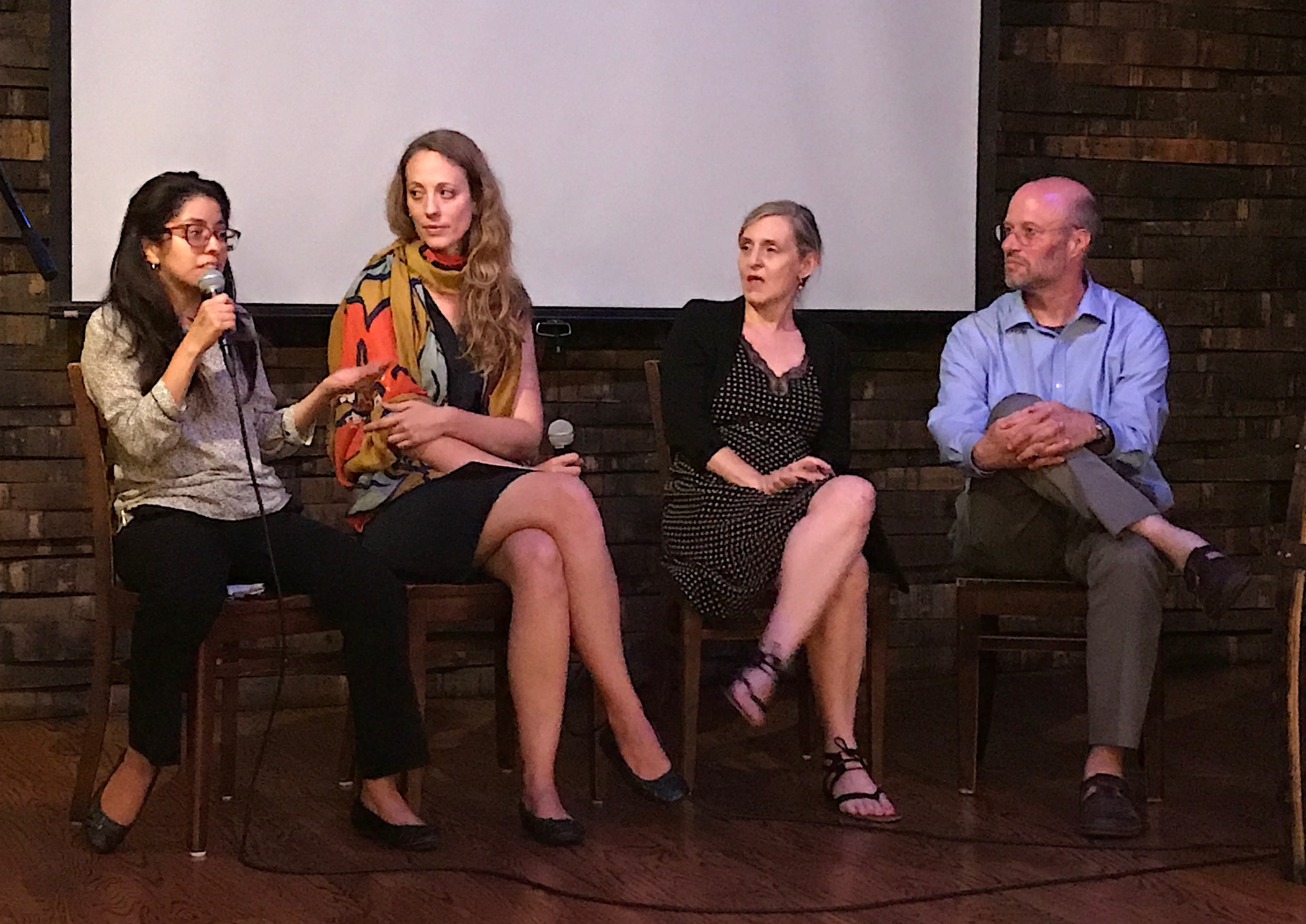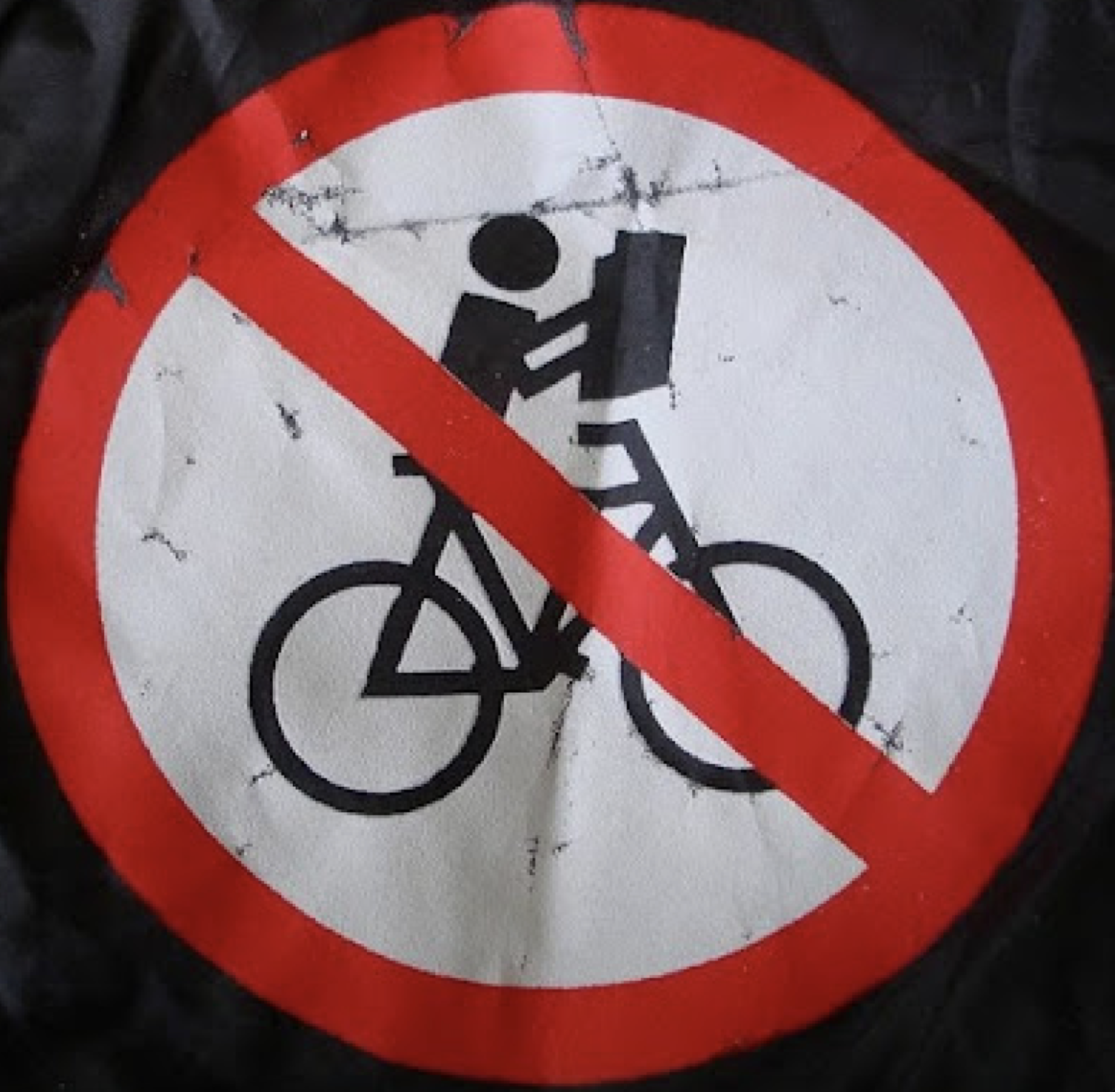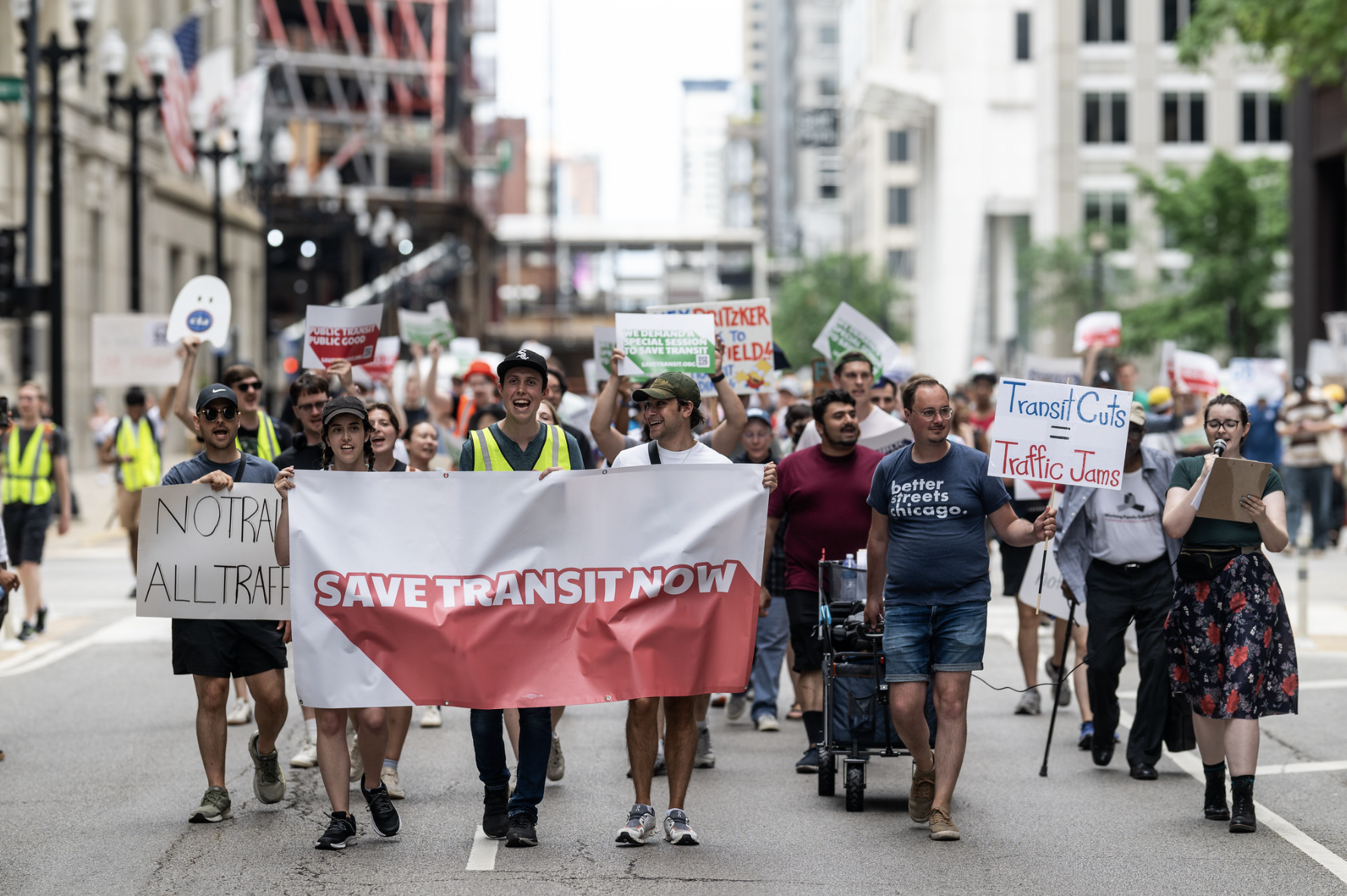Last night’s panel discussion “Bike Talk: Chicago’s Cycling Future,” hosted by the Chicago Architecture Foundation at Revolution Brewing, was an insightful conversation, covering everything from the history of bicycling in our city, to looking at what it will take to make bikes a practical and appealing option for all residents.
Julia Bachrach a historian, preservationist, and urban planner who previously worked at the Chicago Park District for 28 years, kicked off the conversation by outlining how bicycling grew from a pastime of the wealthy to a wildly popular activity and sport by the turn of the Twentieth Century. She discussed figures like Marshall “Major” Taylor, a champion racer who was one of the first Black professional athletes in the U.S. and lived in Chicago at the end of his life, and Mayor Carter Harrison Jr., who ran on a platform of improving conditions for biking.
Bachrach talked about the velodrome that used to stand in Humboldt Park, which also hosted life-sized games of checkers, and the Schwinn family mansion, which was formerly located a few blocks north in Palmer Square. She also discussed how a heart attack got Mayor Richard J. Daley interested in building some of the first bike lanes in the city and expanding the Lakefront Trail.
Next up was Maggie Melin, advocacy manager at the Active Transportation Alliance, who managed the city’s Go Campaigns, which encouraged more biking, walking and transit use in Bronzeville, Pilsen, Albany Park, Edgewater and Garfield Park from 2013 to 2016. While the program is on hold this year due to administrative issues, it’s slated to return next year with initiatives in Little Village and North Lawndale.
Melin said that while residents of these areas have sometimes been skeptical about an outside organization coming into their communities, months of meetings with local stakeholders and hiring outreach ambassadors from the neighborhood are key for earning buy-in. “We really try to hand over the program to the community after they’ve set the stage.”
Melin quoted Go Bronzeville ambassador LaKeisha Hamilton on what it takes to get folks to try new transportation modes: “When it comes to walking and biking, a lot of people need to be pushed, because sometimes they’ll say, ‘Oh, I can’t do it.’ So we became coaches and mentors, saying, ‘Yes, you can, let’s try this out.’”
Streetsblog Chicago reporter Lynda Lopez, who does youth outreach for the Brighton Park Neighborhood Council and volunteers as an affordable housing advocate with Grassroots Illinois Action, further discussed barriers to biking in Black and Brown communities, as well as the intersections between cycling and gentrification. She noted that as a cycling enthusiast as well as a woman of color, she often doesn’t see herself reflected among the people she sees riding bikes in Chicago as well as in advocacy circles.

Lopez discussed how new biking facilities like The 606 elevated trail can be viewed as a double-edged sword in gentrifying communities – great for encouraging more physical activity, but seen also a factor in the displacement of longtime residents. “People ask, ‘Is this meant for us?’” she noted. On the other hand, Lopez said, when historically underserved neighborhoods don’t get bike resources, that’s also a problem. For example, she said, the Divvy service area doesn’t yet include her workplace on the Southwest Side, “so that doesn’t make a membership a wise investment for me.”
After laying out some of the challenges to increased acceptance of biking in communities of color, Lopez looked at some possible solutions. She said that more opportunities for input on upcoming bike projects can help give residents a sense of ownership of the infrastructure “and start to disassociate it with gentrification, because while that’s a very simplistic association, it’s also kind of legitimate.”
Lopez added that if bike advocates want support from communities of color for cycling projects, they should in turn get involved with the social justice issues that matter to the residents of these neighborhoods. For example, she praised the Active Transportation Alliance’s decision to endorse the 606 affordability ordinance promoted by the Logan Square Neighborhood Association and other housing advocates. “I think that’s a really good step to bridge that gap.”
Benet Haller works for the city’s department of planning and development, leading citywide planning efforts and working with other agencies to ensure that regional policies promote reinvestment in the central city. He used his time to propose that a more cohesive network be created between city and suburban off-street paths, riverwalks and boulevards, to create more low-stress, family-friendly routes.
In particular, Haller is interested in seeing more traffic-calmed routes on side streets, what the city of Chicago calls “neighborhood greenways.” For example, he noted that with a few enhancements Dickens Avenue, which passes by Oz Park and connects with Lincoln Park, would make an excellent low-stress bikeway.
During the Q&A , one of the most colorful questions was asked by a Lincoln Square resident who said he recently had a run-in with another cyclist who cursed at him after he caught a flat and made the mistake of walking his cycle in a bike lane. He said this experience was typical. “The biggest problem I have as a bicyclist isn’t drivers, it’s other cyclists,” he complained. “I find bike commuters here to be a bunch of arrogant, prissy, belligerent people.”
The panelists agreed that in many cases that the best way to deal with jerks on the road, including those on two wheels, is to take a saintlike approach. Said Melin, “My only is advice is to try to respond with kindness.”






